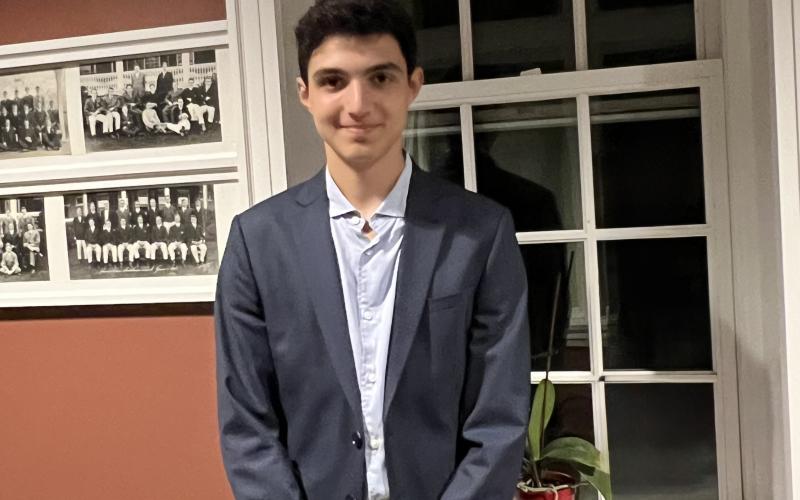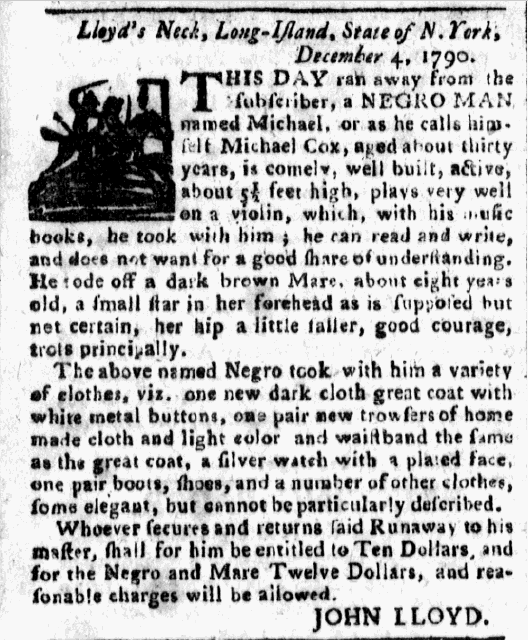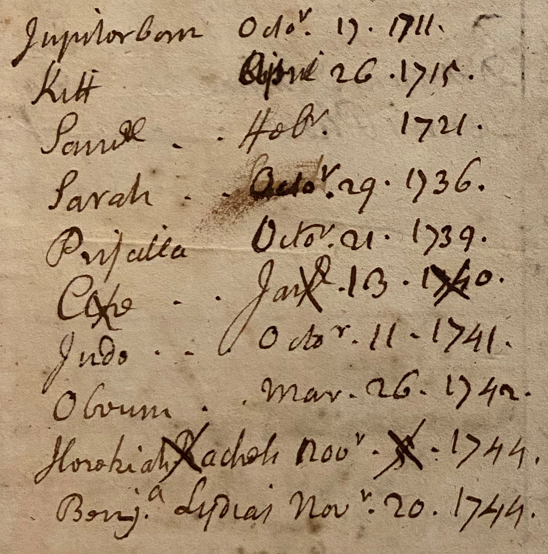We are pleased to welcome to the blog PLI Intern, Daghan Konur.

My name is Daghan Konur, I live on Long Island, and I am a senior at Middlesex School. I come from a Turkish background, and my family has always emphasized the importance of knowing my history and understanding the culture that we so dearly cherish. These values drew me to Preservation Long Island and the Jupiter Hammon Project. Since 2024, I have been working with Education and Engagement Director Andrew Tharler on a project to reconstruct biographies of individuals enslaved at Joseph Lloyd Manor.
We know a lot about the history of Joseph Lloyd Manor, the Lloyd family, and Jupiter Hammon, the first published Black American poet, but what about the others who labored by his side? Jupiter Hammon is an exceptional figure in American history worthy of celebration, but the lives of other people enslaved by the Lloyds are no less deserving of attention. These individuals helped make the manor what it was, and greater awareness of their skills, achievements, and resistance gives us a more complete understanding of the history of the site and our communities on Long Island.
We began the project with a tour of the historic house, which helped give me a sense of how the Lloyd family and their enslaved workforce lived. I learned about the British occupation of the Manor during the Revolutionary War, discussed Jupiter Hammon’s struggle with the tension between slavery and the Revolutionary War’s ideals of freedom and liberty, and walked where the enslaved people slept and worked. The Jupiter Hammon Project has helped Preservation Long Island offer a more balanced interpretation of Joseph Lloyd Manor, bringing attention to Hammon’s writing and historical significance. My project was focused on finding new stories to tell.
The first step was primary source research. I read through various Lloyd family papers in search of the names of enslaved individuals. I read through letters, advertisements, newspapers, and inventories, corroborating previous research and adding new references to a digital database. By the end of this phase, we had confirmed more than 40 enslaved individuals. After organizing the sources, I went back through the documents to begin crafting biographies of each person. Mr. Tharler and I met frequently to discuss how to interpret the sources, polish the biographies, and add historical context to the individual stories.

Some of the stories I researched were especially memorable. I learned that during the Revolutionary War, the British issued the Philipsburg Proclamation, promising freedom to enslaved people who defended the Crown. A man named Michael Cox took advantage of this opportunity. His name appears in the “Book of Negroes,” a record of Black Loyalists who joined the British lines and were evacuated to Canada after the war as free people of color. This ledger shows that Michael Cox was once the property of John Lloyd of Stamford, Connecticut, but left him in 1777 to join the British lines. After the war ended, he was granted a certificate of freedom by General Samuel Birch. This document reveals that Michael Cox boarded a ship for Annapolis Royal in Nova Scotia as a free man. Interestingly, he was later enslaved again by the Lloyd family, this time at Joseph Lloyd Manor. It is uncertain why he returned. Perhaps he was recaptured by the Lloyds, or he may have come back for family members who were still enslaved. Whatever the reason, Michael Cox again tried to escape and reclaim his freedom. A runaway advertisement was printed in 1790 by his enslaver John Lloyd II. This document reveals that “he can read and write” and “plays very well on a violin.” Although it depicts him as a fugitive, the runaway ad also reveals Michael Cox’s creativity, intelligence, and humanity.


Other biographies were more challenging to piece together. For example, the only information I had about an enslaved woman named Cloe was that she was born on January 14th, 1741. This scrap of information came from a page in Henry Lloyd’s ledger book, which lists the birth dates of several enslaved people. Basic information about her family, birthplace, daily life, and age are unknown, let alone any understanding of who she was as a person. If we assume that she lived past infancy, as an enslaved woman, Cloe was likely tasked with performing various domestic chores, such as cooking, cleaning, childcare, and delivering messages around the house. Her work likely kept her in close proximity to the family that enslaved her, with little room for privacy and personal space. She was first enslaved by Henry Lloyd, but it is unclear if she was later owned by his son Joseph and worked in his house down the road. What was her personality like? What secrets did she keep? What dreams did she have? Not knowing these answers and relying on assumptions was definitely the biggest challenge. But sometimes asking the questions is the best way to grasp just how much we don’t know.
Taking part in the Jupiter Hammon project has allowed me to contribute to a piece of Long Island research that hadn’t received much previous attention. It taught me the importance of remembering the history of the land that we live on and having gratitude for the countless lives that shaped the place we know today. The project taught me research skills, made me a more analytical writer, and deepened my interest in the humanities and human rights advocacy. I am grateful for the opportunity to intern with Preservation Long Island and play a role in rediscovering stories that were suppressed and forgotten for centuries.
Daghan’s research on the enslaved community of Joseph Lloyd Manor will appear on Preservation Long Island’s website in the coming months.



